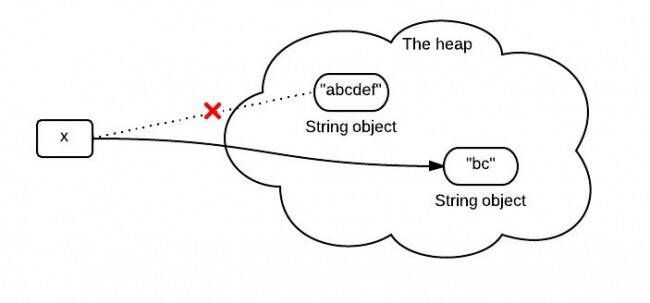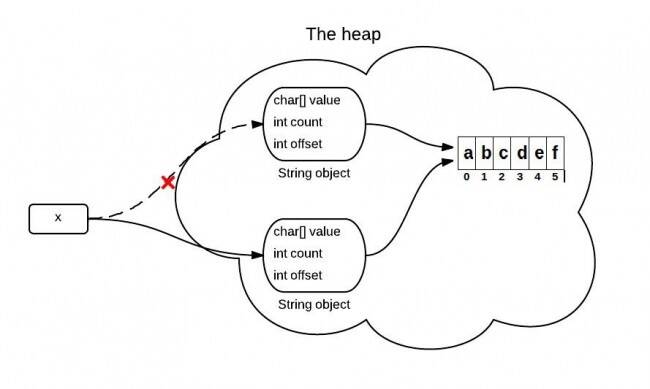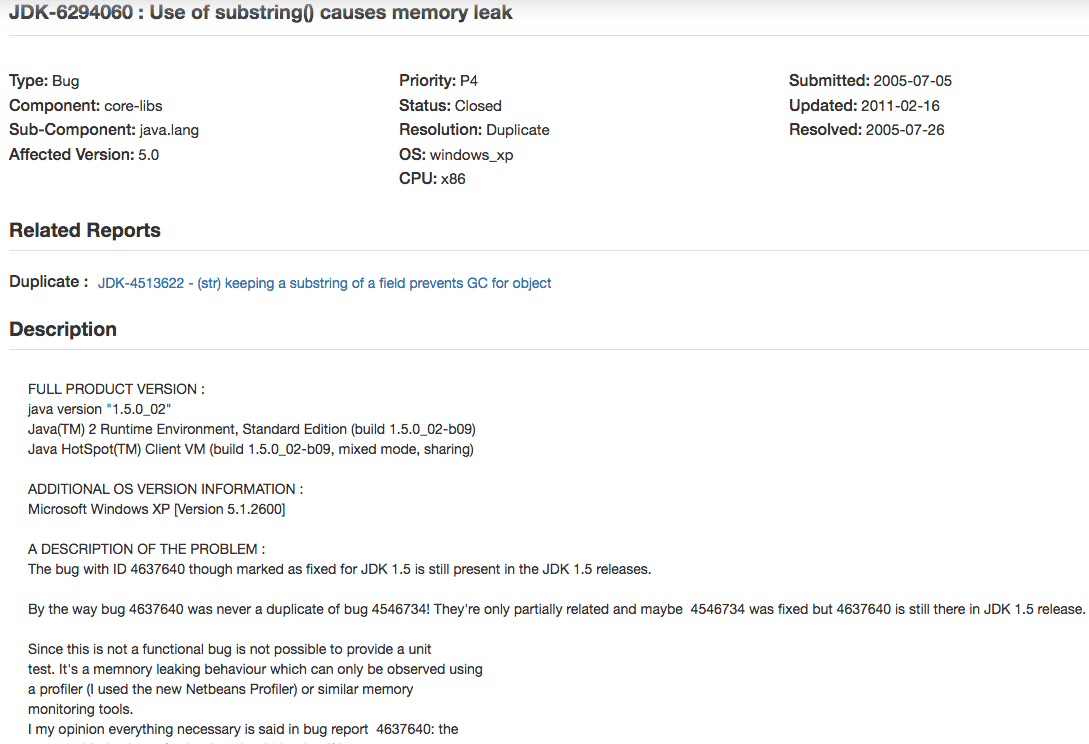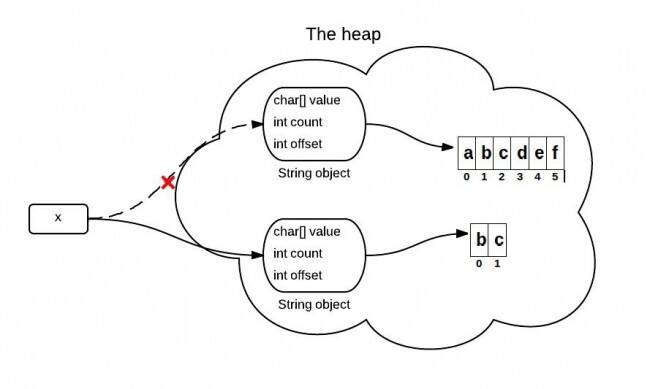您好,登錄后才能下訂單哦!
您好,登錄后才能下訂單哦!
小編這次要給大家分享的是Java如何實現substring方法,文章內容豐富,感興趣的小伙伴可以來了解一下,希望大家閱讀完這篇文章之后能夠有所收獲。
substring實現原理
String是Java中一個比較基礎的類,每一個開發人員都會經常接觸到。而且,String也是面試中經常會考的知識點。String有很多方法,有些方法比較常用,有些方法不太常用。今天要介紹的subString就是一個比較常用的方法,而且圍繞subString也有很多面試題。
substring(int beginIndex, int endIndex)方法在不同版本的JDK中的實現是不同的。了解他們的區別可以幫助你更好的使用他。為簡單起見,后文中用substring()代表substring(int beginIndex, int endIndex)方法。
substring()的作用
substring(int beginIndex, int endIndex)方法截取字符串并返回其[beginIndex,endIndex-1]范圍內的內容。s
String x = "abcdef";x = x.substring(1,3);System.out.println(x);
輸出內容:
bc
調用substring時發生了什么?
你可能知道,因為x是不可變的,當使用x.substring(1,3)對x賦值的時候,它會指向一個全新的字符串:

然而,這個圖不是完全正確的表示堆中發生的事情。因為在jdk6 和 jdk7中調用substring時發生的事情并不一樣。
JDK 6中的subString
tring是通過字符數組實現的。在jdk 6 中,String類包含三個成員變量:char value[], int offset,int count,他們分別用來:存儲真正的字符數組、存儲數組的第一個位置索引、存儲字符串中包含的字符個數。
當調用substring方法的時候,會創建一個新的string對象,但是這個string的值仍然指向堆中的同一個字符數組。這兩個對象中只有count和offset 的值是不同的。

源碼
//JDK 6
String(int offset, int count, char value[]) {
this.value = value;
this.offset = offset;
this.count = count;
}
public String substring(int beginIndex, int endIndex) {
//check boundary
return new String(offset + beginIndex, endIndex - beginIndex, value);
}存在的問題
如果有一個很長的字符串,但是你只需要使用很短的一段,于是你使用substring進行切割,但是由于你實際上引用了整個字符串,這個很長的字符串無法被回收。往小了說,造成了存儲空間的浪費,往大了說,可能造成內存泄漏。這個問題已經被官方記錄在Java Bug Database里面了:

相應的解決辦法:
s1 = s1.substring(x,y) + "";
JDK 7 中的substring
上述問題在JDK 7中得到了解決。JDK 7中,substring方法會在堆中創建一個新的數組。

源碼
//JDK 7
/**
* Allocates a new {@code String} that contains characters from a subarray
* of the character array argument. The {@code offset} argument is the
* index of the first character of the subarray and the {@code count}
* argument specifies the length of the subarray. The contents of the
* subarray are copied; subsequent modification of the character array does
* not affect the newly created string.
*
* @param value Array that is the source of characters
* @param offset The initial offset
* @param count The length
* @throws IndexOutOfBoundsException If the {@code offset} and {@code count} arguments index
* characters outside the bounds of the {@code value} array
*/
public String(char value[], int offset, int count) {
//check boundary
this.value = Arrays.copyOfRange(value, offset, offset + count);
}
/**
* Returns a string that is a substring of this string. The
* substring begins at the specified {@code beginIndex} and
* extends to the character at index {@code endIndex - 1}.
* Thus the length of the substring is {@code endIndex-beginIndex}.
* <p>
* Examples:
* <blockquote><pre>
* "hamburger".substring(4, 8) returns "urge"
* "smiles".substring(1, 5) returns "mile"
* </pre></blockquote>
*
* @param beginIndex the beginning index, inclusive.
* @param endIndex the ending index, exclusive.
* @return the specified substring.
* @throws IndexOutOfBoundsException if the
* {@code beginIndex} is negative, or
* {@code endIndex} is larger than the length of
* this {@code String} object, or
* {@code beginIndex} is larger than
* {@code endIndex}.
*/
public String substring(int beginIndex, int endIndex) {
//check boundary
int subLen = endIndex - beginIndex;
return ((beginIndex == 0) && (endIndex == value.length)) ?
this :
new String(value, beginIndex, subLen);
}看完這篇關于Java如何實現substring方法的文章,如果覺得文章內容寫得不錯的話,可以把它分享出去給更多人看到。
免責聲明:本站發布的內容(圖片、視頻和文字)以原創、轉載和分享為主,文章觀點不代表本網站立場,如果涉及侵權請聯系站長郵箱:is@yisu.com進行舉報,并提供相關證據,一經查實,將立刻刪除涉嫌侵權內容。